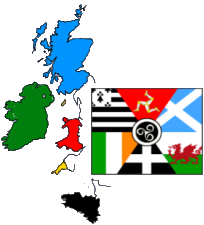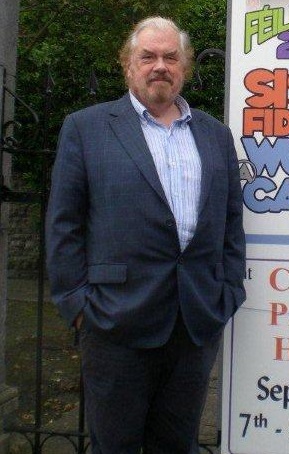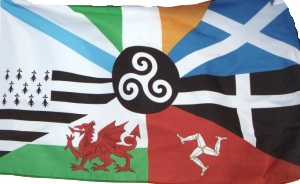Celtic Identity, Language and the Question of Galicia

An issue raised on occasion is the question of why the Six Nations of Cornwall, Brittany, Ireland, Isle of Man, Scotland and Wales are specifically identified as Celtic and only these six. Over the years there have been persistent calls for the inclusion of the North Western Spanish provinces of Galicia and Asturias within the family of modern Celtic Nations. What follows focuses on the “Galician Question” but allows us to share a working definition of what constitutes a Celtic Nation.
The Pan-Celtic movement is built on the recognition that Bretons, Cornish, Welsh, Manx, Irish and Scots benefit from a special relationship with one another due to a shared identity. An identity that is rooted in the distinct living Celtic language of each of the Six Nations. It is also true that history, mythology and the bitter legacy of persecution at the hands of the English and French nation states bind us together. Yet, it is the shared linguistic heritage that primarily defines Celtic identity and drives the Pan-Celtic movement. And it is the existence of the Celtic language that defines the modern Celtic nation.

Twenty years ago this year the Author and Celtic historian Peter Beresford Ellis, well known to Transceltic readers, published his work on the Pan Celtic movement entitled “The Celtic Dawn”. The author’s intent in writing this book was to delve into the origins of the Pan-Celtic movement and to speculate on its future. In so doing Ellis recognised that to engage in this discussion he had to proffer a working definition of what constitutes a modern Celtic nation. Thus the first chapter of the book is entitled “The Galician Crisis: Definition of Celtic”. This chapter frames the discussion that takes place in the rest of the book by defining the modern Celtic nation. This is achieved by describing the outcome of a contentious debate that rocked the Celtic League in 1986. This crisis was triggered by the Celtic League’s recognition of Asturias and Galicia as Celtic nations and the reaction and debate that followed. Ultimately the Celtic League reversed the decision and today excludes Galicia and Asturias from the “Six Nations”. To put this somewhat confusing sequence of events in to perspective, we give you a quote from Chapter One of the “Celtic Dawn”. This quote seeks to summarise the “Galician Crisis” and to share how it’s resolution lead to the definition of what is a Celtic Nation as defined by the Celtic League and endorsed by Transceltic:
In 1986 the Celtic league, the principal organisation of the Pan-Celtic movement, underwent a crisis on this matter (what is a Celtic nation). At the League’s annual gathering meeting in Edinburgh in October of 1986, on the single vote cast by the chairman of the session, the League accepted the principle that Galicians and Asturians of North-West Spain constituted Celtic communities. No Celtic language had been spoken in this area since the ninth century AD. This decision caused an immediate controversy for it implied that the language criterion was no longer valid. How then was a Celtic community to be defined? By race, religion, or some other outwardly identifiable form? The ensuing debate, known in the Pan Celtic movement as the “Galician Crisis”, caused the definition of a Celt to be thoroughly analyzed and assessed. The outcome of this was that the linguistic definition became firmly reinforced with the League’s 1987 annual general meeting.

In a 2008 article “Celtic Legacy in Galicia” written by the well-known academic, Manuel Alberro, and published in the Journal of Interdisciplinary Celtic Studies by the University of Wisconsin Milwaukee Center for Celtic Studies, an argument is made for inclusion of Galicia (and by extension Asturias) as a modern Celtic Nation. Alberro’s argument is essentially that a Celt is whoever he or she thinks they are a Celt and because there is archeological evidence in North West Spain of a once flourishing Celtic culture with enduring Celtic place names and because the Galician’s are fond of the Pipes and attend Celtic Music festivals, that the Spanish provinces should in included in the family of Modern Celtic Nations. The following is a quote from the 2008 article and serves to summarise Alberro’ s argument:
The position of Galicia within the Celtic world has long been the subject of contention, with scholars describing the region’s Celtic heritage while institutions of Pan-Celticism point to the region’s failure to meet the ’linguistic Criterion’ for inclusion. This has not prevented an increasingly self-confident and assertive Galicia from proclaiming a self-defined Celtic identity that has found its expression today in a range of musical festivals and other cultural activities.
We now return to Peter Berresford Ellis and a quote from an interview with Transceltic published on 29 January, 2013. In that interview we posed the following question: “In your 1993 work “The Celtic Dawn – A History of Pan-Celticism”, you discuss the subject of “Who is a Celt”. Do you see Celtic identity going beyond that of language? In response, Ellis gave the following:
Celtic is a linguistic term; a Celt is one who speaks or was known to have spoken within modern historical times a Celtic language. That is central. This brings us back to the future of the languages for if the languages and their attendant culture have no future then the Celts will become as extinct as the Etruscans. Celtic identity is intrinsically linked to language and culture and there can be no dilution of that fact. I was instrumental in persuading the Celtic League to reject an application from Galicia as a Celtic country. The last time a Celtic language was recorded as being spoken in Galicia was in the 9th Century. The language now spoken there (Galego) is a dialect close to Portuguese but influenced by Castilian. True, there are some Celtic words remaining. However, more Celtic words are remaining in French and indeed English. Indeed, Celtic was reported in Cumbria in England as late as the 14th century and even into the 20th century if one accepts the evidence of shepherds using Celtic prime numbers to count their sheep. So on the basis of accepting Galicia, the Celtic League would have to accept France, England (or at least Cumbria) as legitimate Celtic communities.
It is not my intention to minimise the contribution of the Asturians and Galicians in supporting the preservation, protection and promotion of Celtic culture. In our struggle to preserve the Celtic languages and Celtic cultures, we are all allies. But I believe we are engaged in a struggle for survival, a struggle to revitalize the Celtic tongue in Cornwall and on the Isle of Man. We are battling to preserve the status of Welsh, to gain recognition of Breton and to preserve Scottish Gaelic. We are struggling against an Irish government that appears to have scant regard for preserving the language. It is important therefore that we focus our efforts on preserving these living languages. As the Celtic tongues of Galicia and Asturias are now lost to time, unfortunately we can no longer save them. I believe the focus of the Pan-Celtic movement should be on the nations where there are still living Celtic languages, which are the Six Celtic Nations.
Further reading
Celtic Dawn
Peter Berresford Ellis' book "Celtic Dawn" is available from both Amazon.com (US$) and Amazon.co.uk (GB£):
- Pan-Celtic
- English
- Log in to post comments






